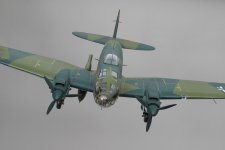Dear All
Welcome to our August 2024 Aircraft newsletter featuring some exciting new products.
All our hand carved Mahogany aircraft take in the region of 60 man hours to manufacture plus many hours of drying time which usually equates to a 9 month build time frame. For this reason we only make small numbers of each model and every aircraft is a unique piece. For those of you who wish to spread your budget, please note we do accept stage payments where you can spread the cost over several months. If you require further details of any of the aircraft in today’s newsletter, please email us on
welcome@gunnclub.co.uk.
A big thank you to Mark Dyer who assisted us as always with the finer details.
------------------------------
WOW559. Airco D.H.4
In 1916 the British aircraft manufacturer Airco produced a single-engine two-seat multipurpose airplane, which gained its place in the history of aviation as the D.H.4. Its design was so successful, that machines of this type were used right up until the end of WWI. The main weakness of the D.H.4 was the power installation several different types of engines were fitted to the airplane during its time in production, and even more were tested in experimental developments. The type had great potential for further perfection, and soon after the beginning of series production the designers led by Geoffrey de Havilland set to work on a new version of the D.H.4.
The DH.4 first flew in August 1916 and it entered operational service in France on 6 March 1917 less than a year later. The majority were manufactured as general purpose two-seaters in the USA for the American expeditionary forces in France, becoming the only American made plane to see combat in WW1.
During late 1917, the uptake of the type by the RFC was accelerated due to a desire to launch retaliatory bombing raids upon Germany following such attacks having been conducted against the British mainland. While Russia had been an early customer for the DH.4, having ordered 50 of the type in September 1917, the Russian and British governments subsequently agreed to delay the former's deliveries, instead diverting those aircraft to RFC squadrons in France.
As well as the RFC, the RNAS also used the DH.4. During the spring of 1917 Number 2 Sqn became the first unit of the service to receive examples of the type. The RNAS flew their DH.4s over both France and over Italy and was typically used to conduct coastal patrols by them.
The DH.4 proved a huge success and was often considered the best single-engined bomber of World War I, even when fully loaded with bombs, with its reliability and impressive performance, the type proved highly popular with its crews. The Airco DH.4 was easy to fly, and especially when fitted with the Rolls-Royce Eagle engine, its speed and altitude performance gave it a good deal of invulnerability to German fighter interception, so that the DH.4 often did not require a fighter escort on missions.
Our 1/30 scale hand carved Mahogany model is one flown by the RNAS during 1917 on a reconnaissance mission to try and spot the German fleet and comes in a unique camouflage scheme for that period.





Priced at $750 plus postage with only 2 available.
The figures and accessories shown are for scale purposes only and are not included.
------------------------------





















